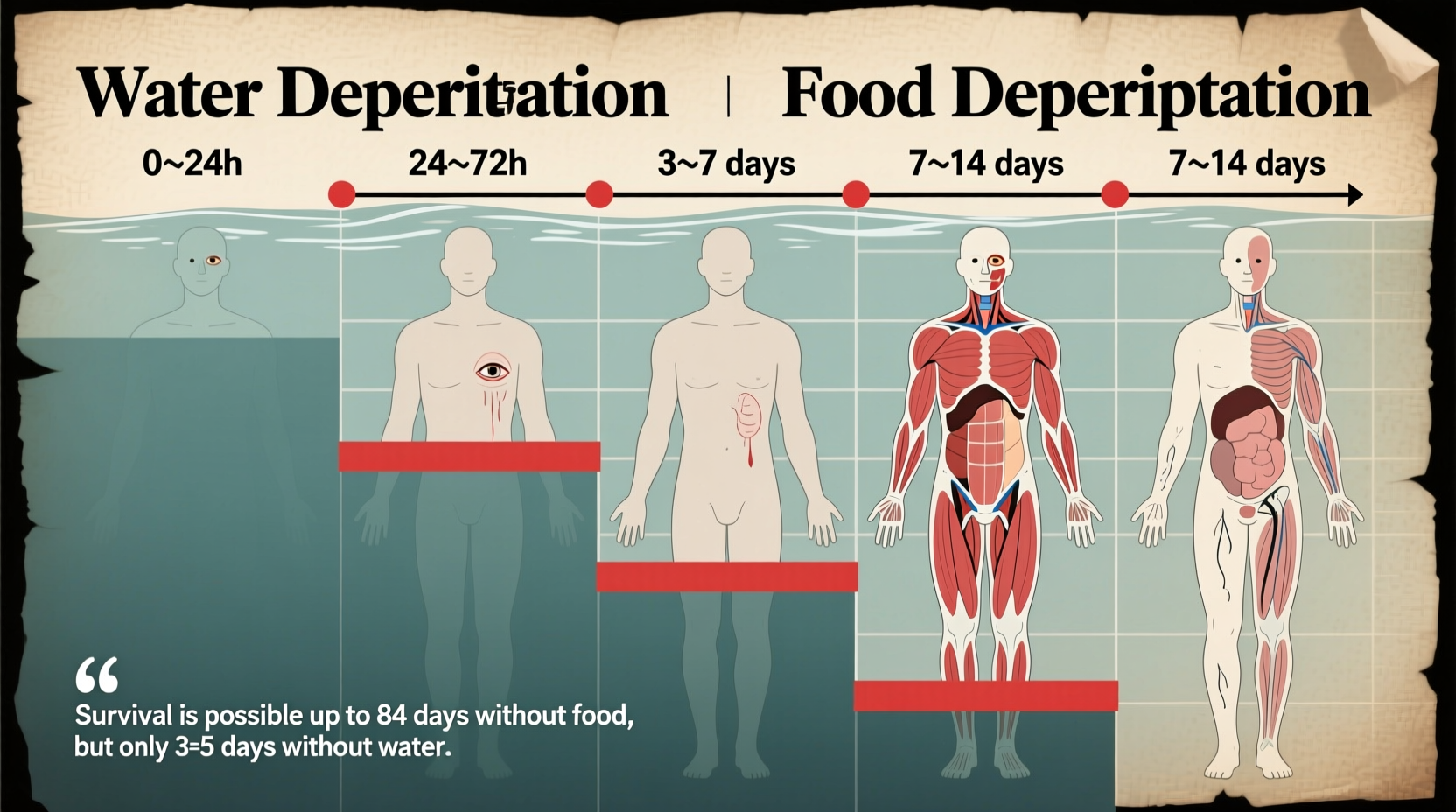The average human can survive approximately 3 days without water and 3 weeks without food, but these timelines vary significantly based on individual health, environmental conditions, and activity levels. Extreme temperatures, medical conditions, and age can reduce survival time to just hours in critical cases.
Understanding Human Survival Limits: Water vs. Food Deprivation
When exploring how long a person can survive without essential resources, it's crucial to distinguish between water and food deprivation. These represent fundamentally different physiological challenges with distinct timelines and risk factors.| Resource | Average Survival Time | Critical Threshold | Primary Physiological Impact |
|---|---|---|---|
| Water | 3 days | 10% dehydration | Organ failure, electrolyte imbalance |
| Food | 3 weeks | Body fat depletion | Metabolic slowdown, muscle wasting |
Factors That Dramatically Alter Survival Timelines
Your actual survival window depends on multiple variables that can shorten or extend these averages significantly.Environmental Conditions: The Temperature Factor
Extreme temperatures dramatically affect water survival time. According to CDC emergency preparedness guidelines, in temperatures above 90°F (32°C), survival without water may drop to just 24-48 hours. Conversely, in cool environments with minimal activity, some individuals have survived up to 10 days without water. The National Institutes of Health notes that humidity levels also play a critical role - dry desert air accelerates dehydration compared to humid environments.Individual Health Status: Not One-Size-Fits-All
Your body composition significantly impacts food survival time. People with higher body fat percentages can survive longer without food as the body metabolizes fat reserves. However, underlying medical conditions like diabetes or kidney disease can drastically reduce both food and water survival timelines. The Mayo Clinic reports that children and elderly individuals typically have shorter survival windows due to less physiological reserve.
Recognizing Critical Warning Signs
Knowing the progression of symptoms can help identify when emergency intervention becomes critical.Water Deprivation Timeline
- First 24 hours: Thirst, reduced urine output, dry mouth
- 24-48 hours: Dark urine, headache, dizziness, fatigue
- 48-72 hours: Rapid heartbeat, confusion, minimal urine production
- 72+ hours: Organ failure, loss of consciousness, death
Food Deprivation Timeline
- First 24-48 hours: Hunger, irritability, mild fatigue
- 3-5 days: Significant energy decline, difficulty concentrating
- 1-2 weeks: Muscle wasting, weakened immune system
- 2-3 weeks: Organ damage, severe weakness, life-threatening complications
Practical Emergency Preparedness Strategies
Understanding survival limits isn't just theoretical knowledge—it's crucial for emergency planning. The American Red Cross recommends maintaining:- Water storage: One gallon per person per day (minimum 3-day supply)
- Emergency food: Non-perishable items requiring no preparation (2-week supply recommended)
- Electrolyte solutions: For rehydration during extended emergencies
- Water purification methods: Filters, tablets, or boiling capability
Avoiding Rehydration and Refeeding Complications
Surviving the initial deprivation period doesn't guarantee safety. Medical professionals warn about two critical post-survival risks:- Refeeding syndrome: Potentially fatal electrolyte imbalances when reintroducing food after prolonged starvation
- Overhydration: Consuming too much water too quickly after severe dehydration can cause hyponatremia
When Survival Timelines Become Critical
Certain scenarios dramatically shorten survival windows beyond the standard timelines. Understanding these context boundaries helps assess real-world emergency situations more accurately:- Active bleeding: Combined with dehydration can reduce survival time to hours
- Extreme exertion: Physical activity in hot environments accelerates dehydration
- Medical emergencies: Conditions like severe diarrhea or vomiting drastically increase fluid loss
- Age factors: Infants can become critically dehydrated in less than 24 hours











 浙公网安备
33010002000092号
浙公网安备
33010002000092号 浙B2-20120091-4
浙B2-20120091-4